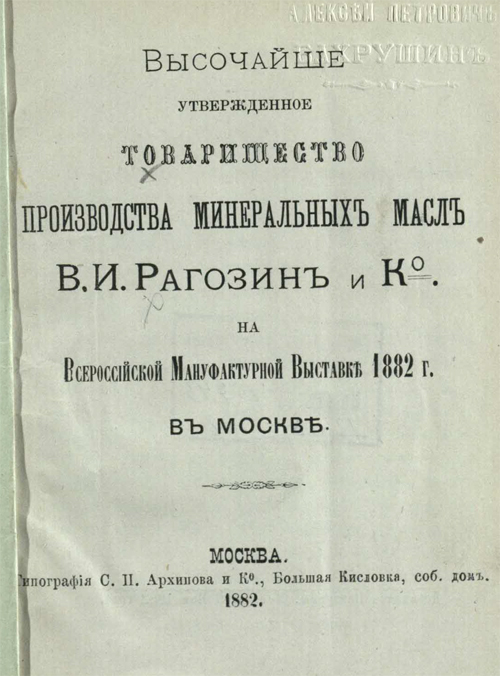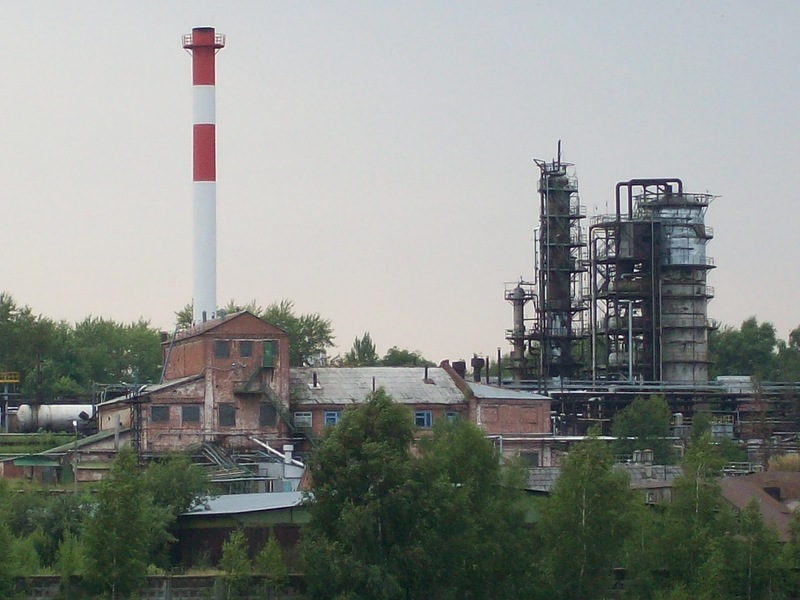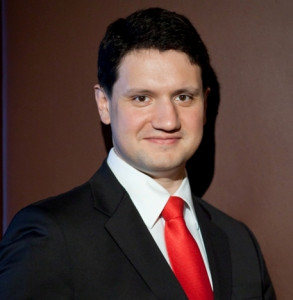Наследуя лучшее — строим будущее! Менделеевский нефтеперерабатывающий завод официальныйМенделеев ГруппИСТОРИЯ ХОЛДИНГА АО «Менделеев Групп» было создано в декабре 2013 года как управляющая компания холдинга на базе производственных активов ЗАО «НефтьГазСбыт». В мае 2012 года компания приобрела контрольный пакет акций ОАО «Ярославский нефтеперерабатывающий завод им. Д.И. Менделеева». И после 6 лет консервации старейший нефтеперерабатывающий завод в России и Европе обрел вторую жизнь. После проведения комплекса восстановительных и реконструкционных мероприятий уже в декабре 2012 года завод был запущен в эксплуатацию с выходом на устойчивую переработку и безубыточный объем производства. Благодаря проведенным антикризисным мероприятиям, сегодня предприятие является высокотехнологичным производственным комплексом в центральной части России и оказывает услуги по хранению, фасовке нефтепродуктов, а также производству высокопрочной пластиковой тары. Осенью 2014 года завершился 1 этап технического перевооружения ЯНПЗ. Было заменено устройство в колоннах, проведено техническое обслуживание одной из установок. В конце сентября была запущена колонна, которая позволила увеличить выход продукции до 1 тысячи 900 тонн в сутки. Так, в 2013 году было переработано 320 тысяч тонн нефти, сейчас, после проведенных мероприятий, мощностей предприятия хватит, чтобы перерабатывать 600 тысяч тонн сырья. Одной из главных задач на сегодняшний день является увеличение общего объема переработки легкого сырья до 1 млн тонн в год и глубины переработки до 89,9 % при значительном улучшении качества продукции. Менделеев Групп работает совместно с лидерами в мировом инжиниринге, и в 2015 – 2018 годах планирует строительство самого современного нефтеперерабатывающего завода нового поколения мощностью до 3 млн тонн в год, работающего по инновационной безмазутной технологии. В 2014 году Ярославский нефтеперерабатывающий завод имени Д.И. Менделеева признан лучшим промышленным предприятием Ярославской области в отраслевой группе «Химическая и нефтехимическая промышленность». На сегодняшний момент на заводе работает 571 человек. В 2014 году в состав холдинга «Менделеев Групп» вошла геологоразведочная компания ООО «ГЕОКОМ», после чего были начаты работы по геологическому изучению недр Петропавловского лицензионного участка и поиск потенциально перспективных объектов для дальнейшего бурения скважин, а также выявления месторождений нефти и газа. В конце 2014 года созданы компании «Менделеев Медиа» и «Менделеев Финанс». 2014 год выдался для Холдинга «Менделеев Групп» знаменательным на юбилейные даты. В феврале этого года исполнилось 180 лет со дня рождения Дмитрия Ивановича Менделеева, имя которого неразрывно связано с историей и брендом Компании. 80 лет назад, 13 октября 1934 года, в связи со столетием со дня рождения Д.И. Менделеева, Константиновскому нефтеперерабатывающему заводу на основании Постановления Центрального Исполнительного Комитета СССР присвоено имя великого русского ученого. А в сентябре Ярославский нефтеперерабатывающий завод им. Д.И. Менделеева, основной производственный актив «Менделеев Групп», отпраздновал свой 135-летний юбилей. mendeleev.ru Константиновский нефтеперерабатывающий завод им.Д.И.Менделеева. - АССОРТИПродолжая начатую в прошлом очерке http://victor-musatov.livejournal.com/701.html тему истории химической и нефтехимической промышленности Российской Империи, хочу рассказать об одном очень интересном заводе, на который иногда обращают свой взгляд и взгляд своих фотокамер туристы проходящих по Волге по пути в Ярославль или обратно круизных теплоходов. Если идти на теплоходе вниз от Рыбинска до Ярославля или обратно, то на высоком правом берегу, можно увидеть завод, внешне похожий на химический или нефтеперерабатывающий, его назначение угадывается по характерного вида колоннам-агрегатов и дымовым трубам. Это и есть Константиновский нефтеперегонный завод купца 1-ой гильдии, дворянина и инженера-технолога Виктора Ивановича Рагозина. Чем же так замечателен этот завод, чем знаменит, что на нем стоит остановить особое внимание и даже запечатлеть, как какой-нибудь памятник архитектуры. Да, этот завод памятник, причем действующий, памятник инженерной и научной мысли, памятник успешно развивавшейся в Российской Империи нефтяной и только только зарождавшейся нефтехимической промышленности, предприятие ставшее в этой отрасли передовым, заявившее о России, как о стране с высокоразвитой промышленностью, способной выпускать конкурентноспособную продукцию, качество которой признавалось во всем мире. А началось все в далеком 1879 году, когда в поселке Константиновский Ярославской губернии, купцом I-ой Гильдии, уже известным к тому времени инженером-технологом, а в 1879 году за заслуги перед отечественной нефтяной промышленностью решением Учебного совета Санкт-Петербургского Технологического института ему было присвоено почетное звание инженера-технолога, Виктором Ивановичем Рагозиным, на высоком правом берегу Волги был построен и пущен нефтеперегонный завод. Чем же так замечателен этот завод, чем знаменит, что на нем стоит остановить особое внимание и даже запечатлеть, как какой-нибудь памятник архитектуры. Да, этот завод памятник, причем действующий, памятник инженерной и научной мысли, памятник успешно развивавшейся в Российской Империи нефтяной и только только зарождавшейся нефтехимической промышленности, предприятие ставшее в этой отрасли передовым, заявившее о России, как о стране с высокоразвитой промышленностью, способной выпускать конкурентноспособную продукцию, качество которой признавалось во всем мире. А началось все в далеком 1879 году, когда в поселке Константиновский Ярославской губернии, купцом I-ой Гильдии, уже известным к тому времени инженером-технологом, а в 1879 году за заслуги перед отечественной нефтяной промышленностью решением Учебного совета Санкт-Петербургского Технологического института ему было присвоено почетное звание инженера-технолога, Виктором Ивановичем Рагозиным, на высоком правом берегу Волги был построен и пущен нефтеперегонный завод.  Завод созданный Рагозиным был одним из самых передовых по применяемым технологиям, он производил нефтяные смазочные масла и полупродукты глубокой переработки нефти (бензол, толуол, ксилолы, антрацен), или как их называют сегодня тяжелые продукты нефтехимии. Завод "Товарищества производства минеральных масел В. И. Рагозин и К°" производил широкий спектр смазочных масел: веретенное, машинное, вагонное зимнее и вагонное летнее. Затем в номенклатуре готовой продукции появились и другие: цилиндровое, соляровое…Экспертизой продукции заводов Рагозина, проведённой во Франции, было признано, что качество русских масел намного выше американских аналогов. В 1880 году В.И.Рагозин получил право маркировать свою продукцию российским государственным гербом, что являлось высшей оценкой выпущенных его заводами нефтепродуктов и, которые поставляясь на экспорт, получили за границей название «Русские».В 1878-1880 гг. продукция Рагозина прошла самое взыскательное испытание на русском железнодорожном транспорте (применение нефтяных смазочных масел сократило расход угля почти на 1/3).Появление масел Константиновского завода на мировом рынке вызвало сенсацию. Русские масла, продукты нефтехимии получили на международных выставках 18 золотых и серебряных медалей.Продукция в течение десятилетий поставлялась не только на отечественный рынок, но и в Англию, Францию, Германию, Египет. Цена масел на рынке была в четыре раза выше американских масел, продукция пользовалась огромным спросом.   Основатель завода инженер и предприниматель Виктор Иванович Рагозин, используя советы и рекомендации великого ученого-химика Д.И.Менделеева, горячо протестуя против варварского использования мазута, создал совершенную для своего времени технологию производства смазочных масел. "Нельзя, - утверждал Рагозин, - найти какого-нибудь оправдания к продолжению безумного расточения (нефти), так как расточается не частное имущество, а достояние государства и народа, то, что дала народу его земля, то, чем вечно владеет народ..." Он привлекает к участию в разработке технологии и аппаратуры лучших ученых того времени: проф. В.В. Марковникова, В.Н.Оглобина, проф. А.А.Летнего, Ю.В. Лермонтову, В.О.Ковалевского и др. В 1881 году в заводскую лабораторию был приглашен Дмитрий Иванович Менделеев,в которой он работал в течение трех месяцев.   В советское время, когда в стране создавались новые отрасли промышленности, возникла необходимость в новых видах масел, смазок, топлива, обеспечивающих эксплуатацию новейших машин и механизмов, начиная от прокатных станов и кончая контрольно-измерительными приборами. На заводе ускоренными темпами реконструировались и строились новые установки.В годы Великой Отечественной войны завод поставлял фронту авиационные масла, консистентные смазки, автобензин, битум, топочный мазут.В 50-80-е годы проведена генеральная реконструкция завода, в результате которой освоены производства присадок, новых видов масел и смазок.В наше время "Менделеевский нефтеперерабатывающий завод" в поселке Константиново не прекратил свое существование, а сумел выжить в непростой экономической ситуации.В 1995 году "Менделеевский НПЗ" вошел в состав нефтегазовой компании "Славнефть", что дало новый импульс развитию предприятия.В настоящее время на заводе перерабатывается более 300 тысяч тонн нефти в год, действует 15 установок, выпускается около 50 видов продукции: нефтяные топлива, масла белые, моторные, трансмиссионные, энергетические и индустриальные, пластические смазки, масляные СОЖ и присадки к маслам, пластизоли, тара металлическая и комбинированная. В советское время, когда в стране создавались новые отрасли промышленности, возникла необходимость в новых видах масел, смазок, топлива, обеспечивающих эксплуатацию новейших машин и механизмов, начиная от прокатных станов и кончая контрольно-измерительными приборами. На заводе ускоренными темпами реконструировались и строились новые установки.В годы Великой Отечественной войны завод поставлял фронту авиационные масла, консистентные смазки, автобензин, битум, топочный мазут.В 50-80-е годы проведена генеральная реконструкция завода, в результате которой освоены производства присадок, новых видов масел и смазок.В наше время "Менделеевский нефтеперерабатывающий завод" в поселке Константиново не прекратил свое существование, а сумел выжить в непростой экономической ситуации.В 1995 году "Менделеевский НПЗ" вошел в состав нефтегазовой компании "Славнефть", что дало новый импульс развитию предприятия.В настоящее время на заводе перерабатывается более 300 тысяч тонн нефти в год, действует 15 установок, выпускается около 50 видов продукции: нефтяные топлива, масла белые, моторные, трансмиссионные, энергетические и индустриальные, пластические смазки, масляные СОЖ и присадки к маслам, пластизоли, тара металлическая и комбинированная.  victor-musatov.livejournal.com Ярославский НПЗ. Адрес, сайт, контакты, продукция нефтеперерабатывающего заводаЯрославский нефтеперерабатывающий заводим. Д. И. МЕНДЕЛЕЕВА, Ярославский НПЗКонтактыАдрес: РФ, 115172, Ярославская область, Тутаевский район, пос. КонстантиновскийТелефон: +7 (48533) 7-91-31 Факс: +7 (48533) 7-95-55 e-mail: [email protected] Ярославский НПЗ, официальный сайтwww.npz-mendeleev.ru Генеральный директорНиколай Карпов (с 27 декабря 2016) История Ярославского НПЗ Ярославский НПЗ им. Менделеева Ярославский НПЗ им. МенделееваЯрославский НПЗ им. Менделеева — основан в 1879 году, является первым нефтеперерабатывающим заводом в России среди ныне действующих.1 октября 1879 — завод выдал первую продукцию.В 1881 г. на заводе работала группа сотрудников во главе с Д. И. Менделеевым; был установлен стопудовый куб для непрерывной перегонки нефти.1934 – заводу присвоено имя Д. И. Менделеева.1976 – создано ПО «Ярославнефтеоргсинтез», в него вошли Новоярославский НПЗ как головное предприятие, а также Ярославский нефтеперерабатывающий завод им. Д. И. Менделеева, Ярославский завод нефтяной тары.1979 — ЯНПЗ производит около 50 видов продукции, ежегодное количество новых наименований товаров — 8-10 видов.1995 — 2012 — Ярославский НПЗ являлся дочерним обществом ОАО «НК Славнефть».Май 2012 — контрольный пакет акций Ярославского НПЗ приобретен ЗАО «НефтьГазСбыт».Сентябрь 2014 — контрольный пакет акций завода куплен АО «Менделеев Групп», управляющей компанией нефтеперерабатывающего холдинга.2014 — ЯНПЗ признан лучшим промышленным предприятием Ярославской области.3 февраля 2016 — Московский кредитный банк купил 88,7 % акций Ярославского НПЗ. Топливная продукция Ярославского НПЗ
Продажи топлива, нефтепродуктов Экспорт Mendeleev Group SA
www.toplivoprodazha.ru Ярославский нефтеперерабатывающий завод имени Д. И. Менделеева1. Россия – Russia, also officially the Russian Federation, is a country in Eurasia. The European western part of the country is more populated and urbanised than the eastern. Russias capital Moscow is one of the largest cities in the world, other urban centers include Saint Petersburg, Novosibirsk, Yekaterinburg, Nizhny Novgorod. Extending across the entirety of Northern Asia and much of Eastern Europe, Russia spans eleven time zones and incorporates a range of environments. It shares maritime borders with Japan by the Sea of Okhotsk, the East Slavs emerged as a recognizable group in Europe between the 3rd and 8th centuries AD. Founded and ruled by a Varangian warrior elite and their descendants, in 988 it adopted Orthodox Christianity from the Byzantine Empire, beginning the synthesis of Byzantine and Slavic cultures that defined Russian culture for the next millennium. Rus ultimately disintegrated into a number of states, most of the Rus lands were overrun by the Mongol invasion. The Soviet Union played a role in the Allied victory in World War II. The Soviet era saw some of the most significant technological achievements of the 20th century, including the worlds first human-made satellite and the launching of the first humans in space. By the end of 1990, the Soviet Union had the second largest economy, largest standing military in the world. It is governed as a federal semi-presidential republic, the Russian economy ranks as the twelfth largest by nominal GDP and sixth largest by purchasing power parity in 2015. Russias extensive mineral and energy resources are the largest such reserves in the world, making it one of the producers of oil. The country is one of the five recognized nuclear weapons states and possesses the largest stockpile of weapons of mass destruction, Russia is a great power as well as a regional power and has been characterised as a potential superpower. The name Russia is derived from Rus, a state populated mostly by the East Slavs. However, this name became more prominent in the later history, and the country typically was called by its inhabitants Русская Земля. In order to distinguish this state from other states derived from it, it is denoted as Kievan Rus by modern historiography, an old Latin version of the name Rus was Ruthenia, mostly applied to the western and southern regions of Rus that were adjacent to Catholic Europe. The current name of the country, Россия, comes from the Byzantine Greek designation of the Kievan Rus, the standard way to refer to citizens of Russia is Russians in English and rossiyane in Russian. There are two Russian words which are translated into English as Russians 2. Ярославская область – Yaroslavl Oblast is a federal subject of Russia, which is located in the Central Federal District, surrounded by Tver, Moscow, Ivanovo, Vladimir, Kostroma, and Vologda Oblasts. This geographic location affords the oblast the advantages of proximity to Moscow, additionally, the administrative center of the oblast—the city of Yaroslavl—is an intersection of major highways, railroads, and waterways. The climate of Yaroslavl Oblast is temperate continental, with long, cold and snowy winters, Average January temperature is about −12 °C, while average Julys is +18 °C. Formerly almost all territory was covered with conifer forest, but now a large portion of it has been replaced with birch-and-aspen secondary forests. Large animals have been reduced in numbers, but there are still some bears, wolves, foxes, moose. A great number of birds live and nest in the oblast. In cities, most common birds are pigeons, jackdaws, hooded crows, rooks, house sparrows, the Volga River flows through Yaroslavl Oblast, with two major dams constructed at Uglich and Rybinsk. Mineral resources are limited to construction materials and peat, there are also mineral water springs and wells. First people settled in the area of the modern day Yaroslavl Oblast during the Paleolithic Era with the end of the last glacial period, agriculture was introduced in the region not later than the beginning of the 2nd millennium BC with the arrival of the Fatyanovo–Balanovo culture. The oblast belonged to the core of the Russian lands since the early Middle Ages, Rostov, the oldest city in the region, was first mentioned in 862. It soon became the political and religious centers of the Northeast Kievan Rus. Many notable Rurikid princes had their fief in Rostov, among them were St. Boris and Yaroslav the Wise, in 1054 Rostov and other North-Eastern lands were inherited by Yaroslavs son Vsevolod who also ruled the southern Principality of Pereyaslavl. Remaining in their distant capital the princes of Pereyaslavl had to rule the province through their viceregents and that period was most memorable for the 1071 smerd rebellion led by still powerful magi of Yarsolavl during which bishop Leontius of Rostov was murdered. In early 12th century Rostov got its own prince, Yuri Dolgoruky and he moved his capital to Suzdal in 1125 diminishing the influence of Rostov as a result. During his reign Dolgoruky founded many cities of the Northeast Rus. Prince Andrey Bogolyubsky who succeeded his father Yury as a ruler of the Rostov-Suzdal lands in 1157 was the first Russian ruler to give up his claims for the thrones of Kiev and Pereyaslavl. He proclaimed himself a Grand Prince and moved his capital to the city of Vladimir near Suzdal marking the beginning of history of the Vladimir-Suzdal Principality, after the death of Andreys brother Vsevolod the Big Nest in 1212 Russian North-East entered a continuous stage of feudal fragmentation. Rostov, Yaroslavl, Pereslavl and Uglich became principalities on their own right still recognizing formal suzerainty of the Grand Princes of Vladimir, northeastern Rus was attacked by the Mongol-Tatar armies in the winter of 1238 3. Орден Трудового Красного Знамени – It is the labour counterpart of the military Order of the Red Banner. A few institutions and factories, being the pride of Soviet Union, the Order of the Red Banner of Labour began solely as an award of the Russian SFSR on December 28,1920. The all-Union equivalent was established by Decree of the Presidium of the Supreme Soviet on September 7,1928, the Order of the Red Banner of Labour could be awarded multiple times to the same recipient for successive deeds and long time merit. The Order of the Red Banner of Labour was worn on the side of the chest. If worn in the presence of Orders or medals of the Russian Federation, the design of the Order of the Red Banner of Labour evolved over the years. Its original design, called type 1 was amended in 1936, the type 1 Order consisted of a 38 mm wide by 43 mm high silver badge in the shape of a cogwheel, at center, a disc bordered along its entire outer diameter by panicles of wheat. Protruding from under the half of the central disc, a red enamelled triangle pointing downwards. On the central disc in the background, an electric dam, at center, a gilded hammer and sickle, at the top. At the very bottom of the cogwheel, the relief inscription USSR on a stylised horizontal shield bisected by a smaller cogwheel meshing into the larger one, the Order was secured to clothing with a threaded screw and nut arrangement. The earlier nuts were 28 mm in diameter, later ones measured 32 mm, the type 2 Order also consisted of a silver badge in the shape of a cogwheel, it measured 38 mm wide by 44 mm high. On the lower circumference of the cogwheel, the relief inscription Proletarians of the World, below the cogwheel, a red enamelled relief five pointed star superimposed on a shield from which four short panicles of wheat protrude left and right. Along the outer circumference of the central wreath, white enamelled slots spaced equally on the cogwheel. The individuals listed below were recipients of the Order of the Red Banner of Labour, the first recipient of the Order of the Red Banner of Labour of the RSFSR was Nikita Menchukov for saving an important bridge from being destroyed by flowing ice. Order of the Red Banner of Labour of the USSR number 1 was presented to the Putilov Works in Leningrad, the first individual awardees were V. Fedetov, A. Shelagin and M. Kyatkovsky for the rescue of a polar expedition. Mikhail Gorbachev received the Order of the Red Banner of Labour for harvesting a crop on his familys collective farm in 1949 at age 17. He is one of the Orders youngest recipients 4. Нефтеперерабатывающий завод – Oil refineries are typically large, sprawling industrial complexes with extensive piping running throughout, carrying streams of fluids between large chemical processing units. In many ways, oil refineries use much of the technology of, the crude oil feedstock has typically been processed by an oil production plant. There is usually an oil depot at or near an oil refinery for the storage of incoming crude oil feedstock as well as bulk liquid products, an oil refinery is considered an essential part of the downstream side of the petroleum industry. The lighter elements, however, form explosive vapors in the tanks and are therefore hazardous. Petroleum fossil fuels are burned in internal combustion engines to power for ships, automobiles, aircraft engines, lawn mowers, dirt bikes. Different boiling points allow the hydrocarbons to be separated by distillation, Oil can be used in a variety of ways because it contains hydrocarbons of varying molecular masses, forms and lengths such as paraffins, aromatics, naphthenes, alkenes, dienes, and alkynes. Once separated and purified of any contaminants and impurities, the fuel or lubricant can be sold without further processing, smaller molecules such as isobutane and propylene or butylenes can be recombined to meet specific octane requirements by processes such as alkylation, or more commonly, dimerization. The octane grade of gasoline can also be improved by catalytic reforming, the final step in gasoline production is the blending of fuels with different octane ratings, vapor pressures, and other properties to meet product specifications. Another method for reprocessing and upgrading these intermediate products uses a process to separate usable oil from the waste asphaltene material. Oil refineries are large plants, processing about a hundred thousand to several hundred thousand barrels of crude oil a day. Because of the capacity, many of the units operate continuously, as opposed to processing in batches. The high capacity also makes process optimization and advanced process control very desirable, petroleum products are usually grouped into four categories, light distillates, middle distillates, heavy distillates and residuum. This classification is based on the way crude oil is distilled and separated into fractions as in the above drawing and these are not usually transported but instead are blended or processed further on-site. Chemical plants are often adjacent to oil refineries or a number of further chemical processes are integrated into it. For example, light hydrocarbons are steam-cracked in a plant. Using the Claus process, hydrogen sulfide is afterwards transformed to elementary sulfur to be sold to the chemical industry, the rather large heat energy freed by this process is directly used in the other parts of the refinery. Often an electrical plant is combined into the whole refinery process to take up the excess heat. Desalter unit washes out salt from the oil before it enters the atmospheric distillation unit 5. Тутаевский район – Tutayevsky District is an administrative and municipal district, one of the seventeen in Yaroslavl Oblast, Russia. It is located in the central part of the oblast. The area of the district is 1,444 square kilometers and its administrative center is the town of Tutayev. Within the framework of administrative divisions, Tutayevsky District is one of the seventeen in the oblast, the town of Tutayev serves as its administrative center, despite being incorporated separately as a town of oblast significance—an administrative unit with the status equal to that of the districts. As a municipal division, the district is incorporated as Tutayevsky Municipal District, Закон №12-з от7 февраля2002 г «Об административно-территориальном устройстве Ярославской области и порядке его изменения», в ред. Закона №67-з от21 декабря2012 г, «О внесении изменений в отдельные законодательные акты Ярославской области и признании утратившими силу отдельных законодательных актов Ярославской области». Вступил в силу через шесть месяцев со дня официального опубликования, Опубликован, Губернские вести, №11,15 февраля2002 г. Постановление №34 от22 января2008 г, «Об описании границ административно-территориальных единиц Ярославской области и городских районов города Ярославля», в ред. Постановления №658 от2 сентября2008 г, «О внесении изменений в Постановление Губернатора области от22.01.2008 №34». Вступил в силу с22 января2008 г, Опубликован, Губернские вести, №7,30 января2008 г. Закон №65-з от21 декабря2004 г, «О наименованиях, границах и статусе муниципальных образований Ярославской области», в ред. Закона №59-з от28 декабря2011 г «Об изменении статуса рабочего посёлка Песочное Рыбинского района и о внесении изменений в отдельные законодательные акты Ярославской области», Вступил в силу через10 дней со дня официального опубликования. Опубликован, Губернские вести, №70,23 декабря2004 г wikivisually.com |
|
||||||||||||||||||
|
|
||||||||||||||||||
|













